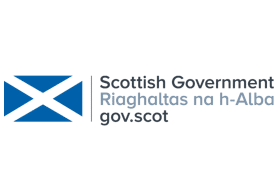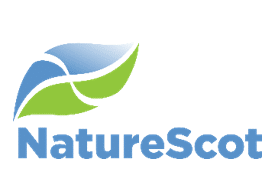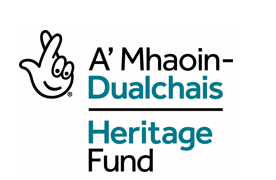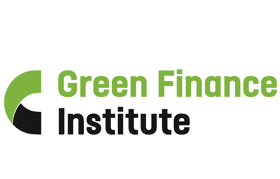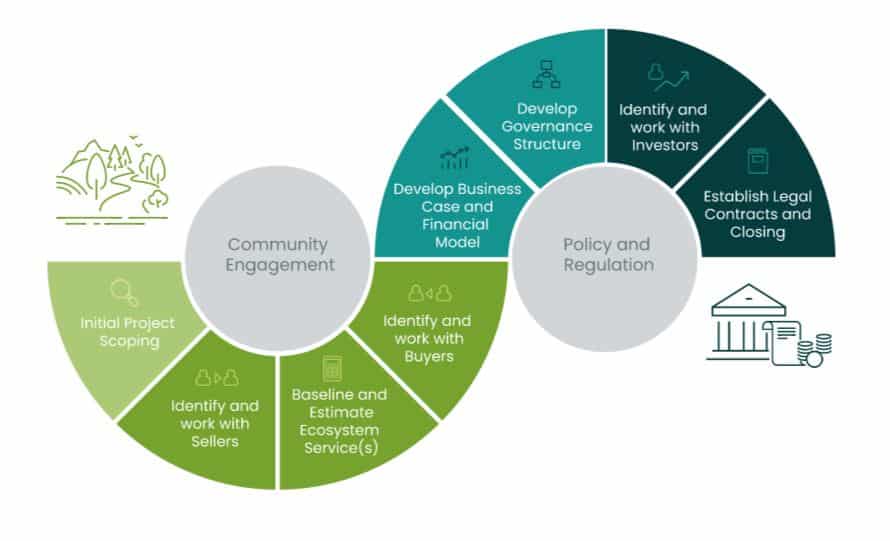The Scottish Government and NatureScot, working in partnership with the National Lottery Heritage Fund and with support from the Green Finance Institute, has launched a new programme of support to help scale up private investment in Scotland’s natural capital.
27 diverse projects have been granted over £3.6 million this year; approximately £1.8 million from public funds and another £1.8 million matched by The National Lottery Heritage Fund. The funded projects are spread across Scotland: from the Solway Firth to Shetland, Fife, across central Scotland, and the Hebrides. Examples include using private finance to restore river catchments to improve water quality and reduce flood risk, while creating community assets such as improved greenspace. These projects have been sorted into two different stages of progress and market readiness:
Successful Projects – Development Phase
Development Phase grants will assist project developers to prepare and make an application for a Market and Investment Readiness grant. These projects are likely to fall within Milestones 1 to 3 of the GFI’s Investment Readiness Toolkit.
Dumfries and Galloway Council - Solway Coast and Marine Project
This project will carry out initial scoping of the potential to use private finance in the delivery of landscape/seascape-scale nature restoration in the Solway Firth. The project will focus on opportunities in saltmarsh, seagrass and native oyster habitats. This will inform plans and fundraising for the Solway Coast & Marine Project (SCAMP) which will run until 2035. FIRNS investment will allow the wider project to gain a better understanding of the marine investment market, identify obstacles and mechanisms, and the actions needed to bring investors on board. Benefits for communities will focus on economic and social outcomes from restoring natural capital, such as local jobs, increased training, access to habitats and sites, health and wellbeing benefits. A strategic approach to community benefits from coastal and marine natural capital projects will be developed with local communities through this project and resources are included for this. This innovative and inclusive engagement will have learning which can be shared. The project will be led by Dumfries and Galloway Council, in partnership with Solway Firth Partnership and Galloway and Southern Ayrshire Biosphere.
Edinburgh City Council - Edinburgh Garden City Programme – Water of Leith Catchment project
This project will create an evidence base of the socioeconomic value that can be generated through investment in specific urban natural capital projects identified in Edinburgh’s Nature Network (ENN) and Green Blue Network (GBN). The aim is to value and monetise the ecosystem services that would be generated by these interventions in order to provide a model for attracting and repaying investment that can be scaled and replicated. The project will provide decision-grade data to support the investment-readiness of specific projects in the Water of Leith catchment, as well as informing urban natural capital projects across Edinburgh and elsewhere. This project will focus on the Leith and Craigleith areas, identified in the GBN and ENN as priorities for nature-based intervention.
Fisheries Management Scotland – Developing a sustainable Scottish source to sea, green finance model
This project will investigate opportunities to create a sustainable funding mechanism to harness green finance and deliver nature restoration work at scale in the aquatic environment, from source to sea. The project will build on the creation of the Scottish Marine Environmental Enhancement Fund (SMEEF) to explore sustainable options for its longer-term structure; explore options to create, and possibly combine, a new fund for river catchment restoration work; ensure that community benefit is integral; and assess the risks and opportunities associated with a role in various new market-based mechanisms to bring additional private finance.
Galloway Fisheries Trust – Annan Riparian Restoration Network
This grant will support further development of the Annan Riparian Restoration Network project with landowners, communities, buyers, and other stakeholders to enable future delivery of a nature restoration programme that will address a range of biodiversity and habitat needs in a priority river catchment.
Green Action Trust – Central Scotland Green Network Routemap to Green Finance Mobilisation
This project focuses on species rich grassland, wetland, and heathlands across the Central Scotland Green Network. Green Action Trust want to enable investment in nature restoration and protection, blue-green infrastructure, and urban greening by creating a portfolio of investable nature-based projects. This will be achieved by identifying potential suppliers, ethical buyers, estimating a baseline of ecosystem services, and developing a monitoring framework to ensure projects achieve their targets for people and nature. The primary output will be a comprehensive routemap for the Central Scotland Green Network
Kaly Group and The James Hutton Institute - Enabling Markets for Marine Natural Capital
This project has been designed to investigate and set up the development of marine natural capital based on native oyster restoration. Proposals will provide a framework for the expansion of existing oyster restoration projects and the creation of new ones using private capital and/or public-private partnerships and blended finance.
Loch Lomond and the Trossachs Countryside Trust – Planning the Financial Future for Wild Strathfillan
Wild Strathfillan will study the potential of a three-tiered structure to bring land managers, community groups, NGOs, and others together to develop investable restoration projects. Each tier represents an increasingly strong commitment to the ambitions of Wild Strathfillan, with the top tier representing partners in the organisation who have fully committed to the vision of nature restoration in the Loch Lomond area. By the end of this project a business model, including the tiered structure, will be fully investigated with a clear vision of the next steps to take.
Assynt Development Trust – It’s In Our Nature: Place Powered Futures
Building on NW2045’s Regional Land Use Partnership (RLUP) pilot, It’s In Our Nature: Place Powered Futures are combining community knowledge and natural capital expertise to explore the potential of natural capital opportunities in the North West Highlands of Scotland. The core purpose of this project is to create a sophisticated place-based approach to ensure that the emerging natural capital economy enables local communities (including landowners) and nature to thrive.
The European Nature Trust – River Catchment Restoration Pilot at Alladale Wilderness Reserve
The River Catchment Restoration Pilot at Alladale seeks to establish a novel financial mechanism for delivering scalable riparian woodland creation schemes with associated peatland restoration. Linking riparian woodland recovery projects with river catchment peatland restoration can engage private sector finance for broad nature recovery beyond carbon, overcoming funding barriers within a catchment- and ecosystem-based approach to nature recovery.
Deciding Matters - Community Benefits Standard for the UK Nature Investment Market, developed in Scotland
The project will develop and test the commercial viability of a Community Benefits certification that would provide assurance on the approach taken to generating place-based community benefits in private finance natural capital projects. This ‘plug-in’ standard would complement existing and developing ecosystem market standards and enable project developers to sell credits that reflect the additional value placed into local communities. The project will work with cross-sector partners and stakeholders to develop a Best Practice Guide on Community Inclusion for Community Benefit and a prototype Community Benefits standard and prepare the outline business case to deliver a completed certification product. The work will feed into the British Standards Institution (BSI) UK Nature Investment Standards programme, which has confirmed this product as meeting a gap in their identified priorities.
Soil Association – Feasibility assessment for an Aggregated Whole Farm approach to accessing natural capital markets
This project aims to scope the potential, and provide a proof of concept, to develop a ‘whole farm’ approach to engaging in nature-based markets. A ‘whole farm nature and natural capital approach’ will facilitate access to nature and natural capital markets using the farm (or equivalent) as the unit or project boundary. This approach is proposed as way to aggregate land-use-based requirements and methodologies for measurement, reporting and verification (MRV) from existing and developing codes and standards. This will be an aggregation exercise, framed around the farm as the ‘project’ and the farmer, civil society landowner or community as the ‘applicant’.
AchieveGood – Scottish Nature Impact Fund Feasibility Study
The Scottish Impact Fund Feasibility Study is a collaboration between AchieveGood, Social Investment Scotland (SIS), and NatureScot. The aim is to explore the feasibility of creating a blended fund structure for nature-based solutions in Scotland. The project is inspired by the success of blended investment funds helping to establish investment markets in other contexts and by the recent creation of the Big Nature Impact Fund in England.
UKCEH – Advancing the UK Saltmarsh Code in Scotland
The project will be delivered through a partnership of Finance Earth, RSPB and the UK Centre for Ecology and Hydrology (UKCEH). It aims to advance the UK Saltmarsh Code, by gathering carbon and cost data to develop a Scotland-specific business case for saltmarsh carbon sales. It will be a primarily desk-based exercise based on data available for three pilot project sites.
Bamff Wildland – Braes of Alyth: Wild Cores and Corridors
This project aims to create a governance structure for landowners in the Alyth area to aggregate projects and attract investment. A combination of public grant and private investment would pay to restore riparian corridors, delivering ecosystem services which are sold to generate revenue for example carbon credits, biodiversity, and avoided costs from flooding. Rather than focusing on a single large area to be completely restored, is prioritising a mixture of “cores” and “corridors”. Cores are existing and important habitats for wildlife, these are joined together by corridors to allow movement of wildlife and increase connectivity.
Ecosulis Ltd – Pentlands Land Managers Nature Restoration Pilot
The project will create a land management plan for a proposed 5,920 ha, over six connected holdings. The area crosses three city council areas: Edinburgh, Midlothian and West Lothian. Most of the area is within the Pentland Hills Regional Park (PHRP). It is also part of the catchment for the Water of Leith, the North Esk, and the Tweed. The project aims to generate revue through payments for carbon sequestration through Woodland Code, and cost reduction models. Soil Carbon Code, Hedgerow Code, Biodiversity Credit, Credit Nature (a new digital biodiversity credit) revenue options will also be explored.
Forest Carbon Ltd – Unlocking the restoration of degraded peatland on crofting and common grazing land
This pilot project, led by Forest Carbon Ltd, will take place on the Shetland Islands and the Isle of Lewis, in consultation with Ollaberry Collafirth and Crooksetter Common Grazings, and with Barvas Estate Trust. It will demonstrate how to develop, to an investment ready stage, a peatland restoration project on land subject to common grazing tenure. It will develop a financial model for each pilot site, community benefit models, and governance and legal arrangements that aim to balance the interests of landowners, common graziers and other community members.
Successful Projects – Market and Investment Readiness Phase
Market and Investment Readiness grants are given to help projects 1) advance their business and financial models to a level of maturity that is ready to meet demand from responsible buyers and investors in values-led, high-integrity natural capital-based markets or 2) create new natural capital market infrastructure such as codes, standards and aggregating mechanisms. These projects are likely to fall within Milestones 4 – 8 of the GFI’s Investment Readiness Toolkit.
Fife Coast and Countryside Trust – Dreel Burn Investment Readiness
This project will support Fife Coast and Countryside Trust to further develop CreditNature’s NARIA framework as a viable financial tool for quantifying biodiversity and using it to support the delivery of catchment scale restoration. A sample investment case will be developed utilising co-design of interventions and a community benefit vehicle. Engagement with communities will be undertaken through a communication and engagement plan, that will include events to engage potentially interested corporates. The project will be delivered by a partnership led by Fife Coast and Countryside Trust with support from Anstruther Improvements Association, Fife Council, James Hutton Institute, SEPA, CreditNature, North Star Transition, Apella Advisors, and Bidwells.
Highlands Rewilding – Joint Ventures for Scalable Community Benefits from Rewilding
This project will develop Highlands Rewilding’s aim for community prosperity by generating investment-ready Joint Ventures (JVs) with the communities local to their estates. These JVs will explore new ways to monetise the ecosystem services derived from the restoration of natural capital assets and will be a mechanism for involving more people in nature restoration, boosting the economy, skills development, job creation and cohesion in local communities. They aim to produce new standards for community engagement and benefits from natural capital projects that are transferrable across the field as a whole. This Market and Investment Readiness project is built on a business model of co-production of ecosystem services and community benefits from rewilding in a way that is low-risk but highly scalable.
North Highland Initiative – Flow Country Green Finance Initiative
This project will pilot a blended finance model and aggregating mechanism for delivering peatland restoration at scale through the Flow Country Green Finance Initiative. The project seeks to create Flow Country carbon as a premium brand, delivering beyond-carbon benefits and sharing commercial benefits with local communities. The project will structure financing deals and deliver peatland restoration at three pilot sites – a farm, an estate and a common grazing – utilising a blend of Peatland ACTION funding, private investment and sale of carbon credits via the Peatland Code, with the latter providing a return for landowners and investors. This will act as proof of concept for the legal structures, financial flows and community benefit mechanism for rolling out at scale. The pilot projects will seek to resolve complex issues surrounding land ownership, agricultural needs and crofting law.
Scottish Forestry and IUCN UK Peatland Programme – Buyer-seller contracts for carbon and other nature markets
This project will develop a publicly available, simple Buyer-Seller contract for Pending Issuance Units and Woodland/Peatland Carbon Units, empowering smaller-scale and community participants in carbon markets and enabling the market to scale. The focus will be on the Woodland and Peatland Carbon Codes but will be applicable to other nature markets as they emerge. Use of a standard contract will bring greater integrity to codes/standards and confidence in their use. The contract will consider different landownerships, stacking and bundling and community benefit sharing.
Tweed Forum – Financing Natural Flood Management for communities and wildlife of the Eddleston Water
The project will develop an investment portfolio of natural flood management interventions that aim to reduce flood risk in the Eddleston Water catchment by 10% in 1 in 30 year flood events, utilising finance from ecosystem service beneficiaries and others to fund the protection and enhancement of the catchment. The project will include modelling of interventions and impacts, financial modelling, landowner and buyer/investor engagement, establishing a Community Interest Company and securing a pilot transaction for a portion of the interventions. The blended finance model will include local flood outcome buyers, insurers, carbon and biodiversity markets and social impact funds.
Palladium International - Loch Lomond and The Trossachs National Park Nature Finance Platform
Palladium International, Loch Lomond and the Trossachs National Park and Revere propose to develop a Nature Finance Platform as a means of catalysing responsible investment in nature restoration in Loch Lomond and the Trossachs National Park. Developed by Revere, the Platform will make at-scale investment possible whereby the investment supports upfront project delivery costs and the revenue is generated from the sale of ecosystem services to ethically vetted corporate offtakers. The revenue is distributed to landowners, the community through the establishment of community funds, the National Park, Revere and the investors.
Scottish Forestry and IUCN UK Peatland Programme – Biodiversity crediting for woodlands, peatlands and other ecosystems
This project will develop the methods, documentation, governance, and infrastructure to enable biodiversity crediting for woodland creation and peatland restoration projects in Scotland, including the capability to either stack carbon and biodiversity payments within the same project (where additionality rules allow) or bundle the two outcomes into one credit that includes a quantified level of biodiversity uplift alongside carbon credits. The methodology will be piloted with four projects and integrated into the Woodland Carbon Code, Peatland Code and UK Land Carbon Registry.
Achnacarry Estate – Arkaig Natural Capital: Regenerative Investment in West Lochaber
This project aims to create the infrastructure and a structured approach to community engagement that will enable private investment to be secured for a catchment scale nature restoration capital programme that includes woodland creation, peatland and saltmarsh restoration, species recovery, regenerative deer management with a longer-term ambition for reintroduction of missing species.
SCOTLAND: The Big Picture - Make Rewilding Your Business (MRYB)
The purpose of this Make Rewilding Your Business is to ready a pipeline of up to 100 ‘investment ready’ nature restoration projects across Scotland. SCOTLAND: The Big Picture is responsible for developing the Northwoods Rewilding Network and their aim is to attract private investment into the restoration of natural capital assets of the Network’s members. The project also aims to develop mechanisms to engage communities in project design and sharing of benefits to support a just transition.
Argyll and the Isles Coast and Countryside Trust – Saving Scotland’s Rainforest with Natural Capital Finance
By developing a Project Standards and Integrity Charter document, alongside investigating a business model for aggregating rainforest projects ACT will streamline the process of creating Atlantic Rainforest restoration and making it market ready. With a uniform set of standards projects will have a ready blueprint meaning carbon certified under the Woodland Carbon Code can be aggregated under an umbrella organisation and sold to buyers with a guarantee of a high-quality baseline, providing returns for land managers and the community.
Forth Rivers Trust - Leven Landscape Enterprise Network (LENs)
This project will replicate the Landscape Enterprise Network model within the catchment of the River Leven. Local enterprises and organisations with an interest in nature-based solutions within the catchment will be connected to land managers willing to contribute their land. Restoration will then be co-designed to maximise the benefit for supply chains, land managers, and nature supporting a range of objectives across the catchment. By the end of this project the first trades between local enterprises and land managers will have taken place, ready for interventions to be carried out.
